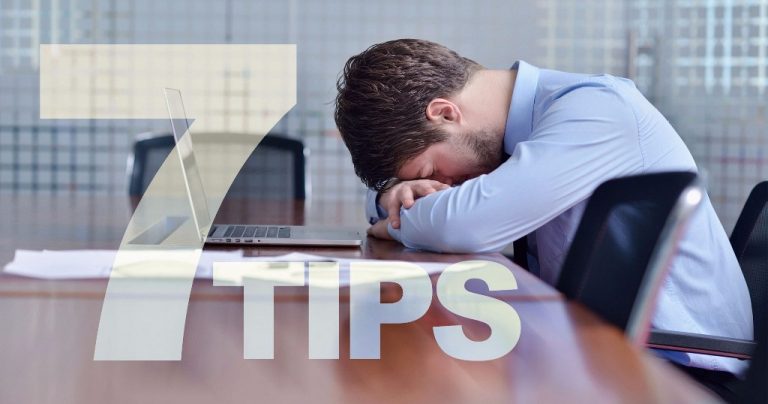
7 Tips for Sitting at Work (& Stopping Pain)
Poor posture and long periods of sitting are common in today’s workplace. In fact, people spend about 2,000 hours per year sitting with poor posture! And because of modern workplace demands, it’s usually difficult to re-adjust once you’ve become used to a certain position. It’s even harder to find time to stand and walk throughout the day. Unfortunately, research shows sitting for long periods of time can increase the risk of obesity, heart disease, and overall mortality. However, both proper positioning and taking breaks to move can reduce the risk of developing back pain, neck pain, and musculoskeletal disorder.
Musculoskeletal disorders are disorders of the muscles, tendons, or nerves, caused by repeated or aggravating body movement – like leaning forward to see your screen. Poor posture and sitting for long periods of time can cause irritation to the hands, wrists, arms, shoulders, neck, and back. This irritation caused by compressed nerves can cause damage and severe pain, increasing the risk of musculoskeletal disorders. Injuries related to workplace posture are known as “work-related upper limb disorder,” “repetitive strain injury,” or “occupational overuse syndrome.”
Certain sitting alignment guidelines should be followed to reduce neck and back pain while at work. Follow these recommendations to help with posture, neck pain, hip pain, and back pain:
- The feet should be supported on a flat surface
- Hips and knees should be level and at angles close to 90 degrees
- The spine should be vertical or reclined and the small arch in your back should be maintained
- When sitting at a computer it is important to keep your shoulders down away from your ears, your elbows bent to 90 degrees, your wrists neutral, and your head facing forward
- Computer screens should be an arm-length away and at the same height of your eyes
- It is important to not bend forward to read the screen as this causes more stress on your neck
- Relaxing muscles through proper breathing techniques is also important because tense muscles can be a source of pain
It’s important to get up and move around as much as possible. Our bodies are not meant to sit still in one place, day after day. If your office allows it, research shows that “sit-stand desks” decrease workplace sitting for one to two hours per day. You can also try “active workstations” such as treadmill desks or pedaling workstations, which look like bike pedals on a stand under your desk (to get your legs moving). Check out this article by USA Today for more information about active workstations.
To decrease the risk of musculoskeletal disorders from repetitive strain, it is recommended to get up from your workstation and take multiple breaks per day – even if the break is to just use the copy machine, grab a cup of water, or file papers. It’s important to stand up, stretch, and walk.
Try these easy tips to help reduce pain caused by sitting for long periods of time. If you’re already in pain and want to visit a physical therapist to relieve your pain and teach you techniques for better posture, request an appointment here.
Article by: Holly Lookabaugh-Deur, PT, DSc, GCS, CEEAA
Ivy Rehab
Holly is a practicing physical therapist, partner and Director of Clinical Services at Ivy Rehab Network with more than 40 years of experience in sports management with young athletes, and is board certified as a geriatric clinical specialist and certified exercise expert for aging adults. Deuer is certified as an aquatic and oncology rehabilitation specialist and serves as adjunct faculty at Central Michigan University and Grand Valley State University.
Office Workers Guide to Stretching & Ergonomics
The medical information contained herein is provided as an information resource only, and does not substitute professional medical advice or consultation with healthcare professionals. This information is not intended to be patient education, does not create any patient-provider relationship, and should not be used as a substitute for professional diagnosis, treatment or medical advice. Please consult with your healthcare provider before making any healthcare decisions or for guidance about a specific medical condition. If you think you have a medical emergency, call your doctor or 911 immediately. IvyRehab Network, Inc. disclaims any and all responsibility, and shall have no liability, for any damages, loss, injury or liability whatsoever suffered as a result of your reliance on the information contained herein.